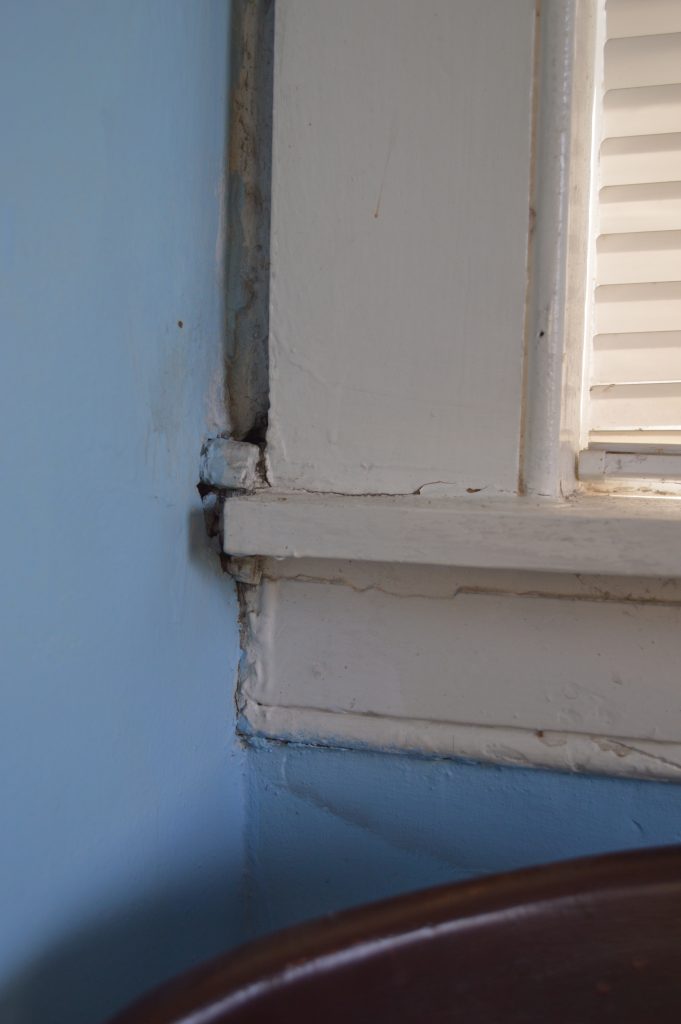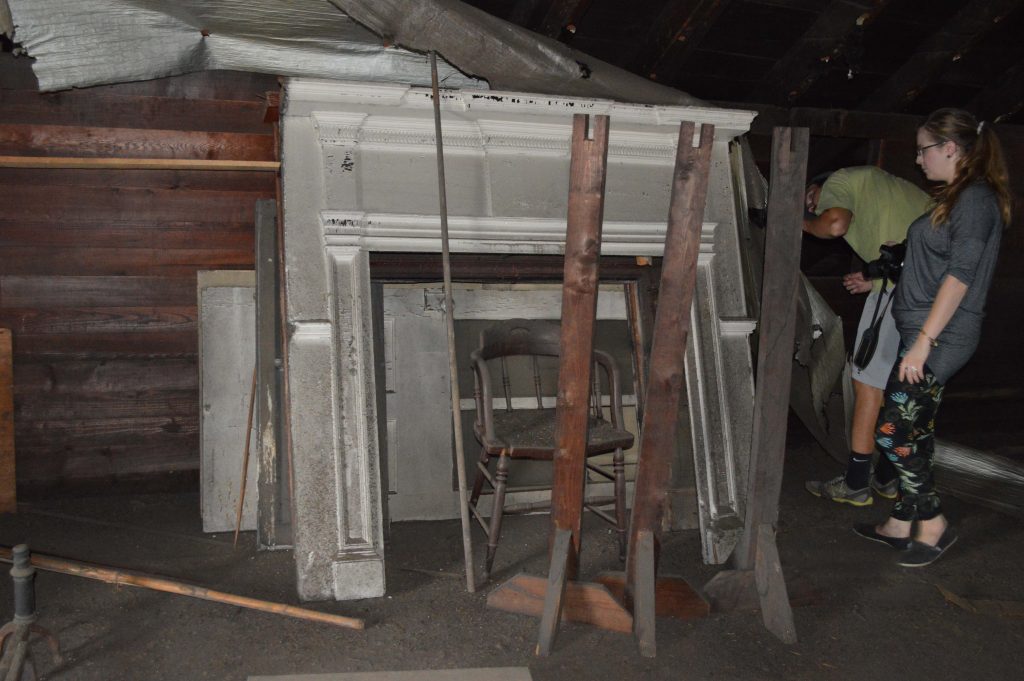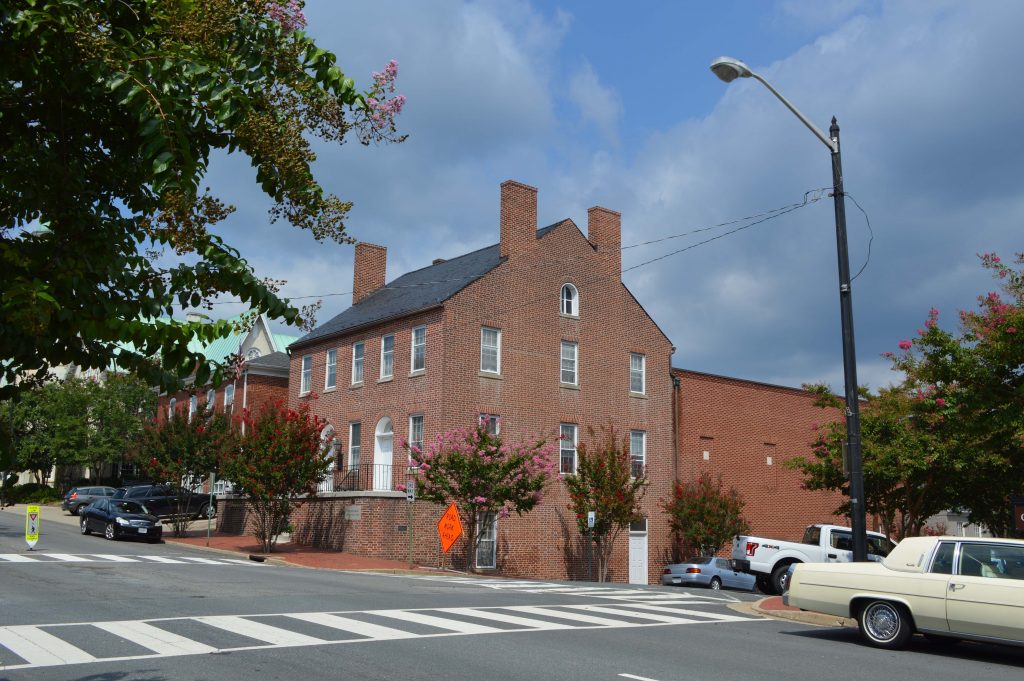During the fall my HISP 461 Building Forensics class descends on a local historic building in hopes of providing the owner or organization with additional information. While we dig through local archives its often the observations concerning the physical fabric of the building which offer the most additional insight about the buildings development over time. This fall the class is investigating the Masons Lodge at the corner of Princess Anne Street and Hanover Street in Fredericksburg. Fortunately for us, the original building specifications survive in the Lodge’s records and date the building to c. 1816. The specifications also allow us to compare the current physical fabric with what is noted in 1816 helping to discern what is original (period 1) and what has been added or changed over time. For instance the original specifications note “…the large room to be finished in a plain stile [style] with chair board of only plain plank 4 inches wide with a bead on each side…” With a little snooping we were able to locate a portion of the original chair rail still intact (fig 1.).

Fig. 1 showing the chair rail with two “beads”. This is all that remains of the original chair rail.
In addition to this great find we were also able to locate remnants of an additional chair board (rail) on the second floor, in this instance it appears to match with a mantle found in the attic.

Fig. 2 A piece of chair rail tucked between the wall and the window casing. This appears to correspond to a piece found on a Federal period mantle located in the attic.

Fig. 3 Federal period mantle found in attic. The chair rail seems to coincide with the portion found near the second floor chimney stack. Also of note is the similarity between this mantle and those found at the National Bank building, also built by the Ellis brothers.
While not huge, such finds add up, eventually creating a more complete “picture” of what the building looked like throughout its life.


An excellent point made with crucial evidence: both pics of physical remains and historic documents!